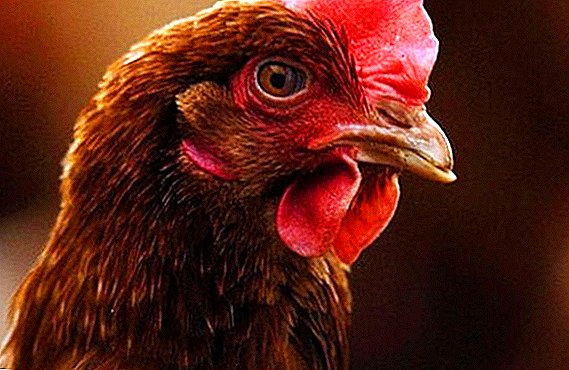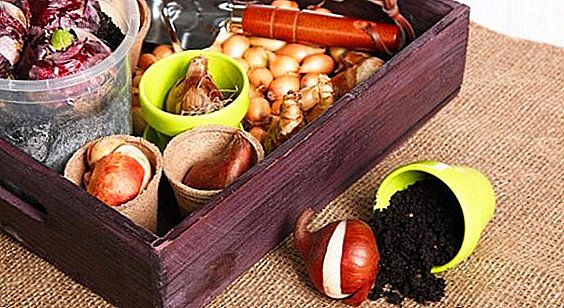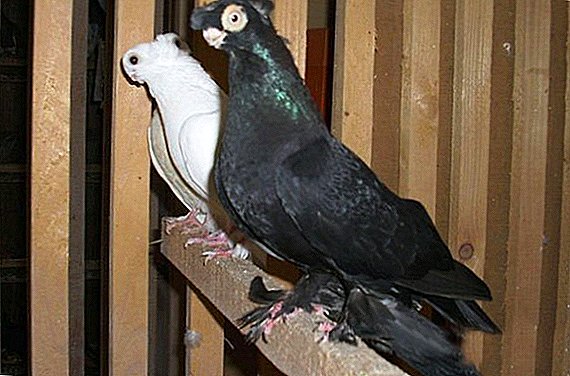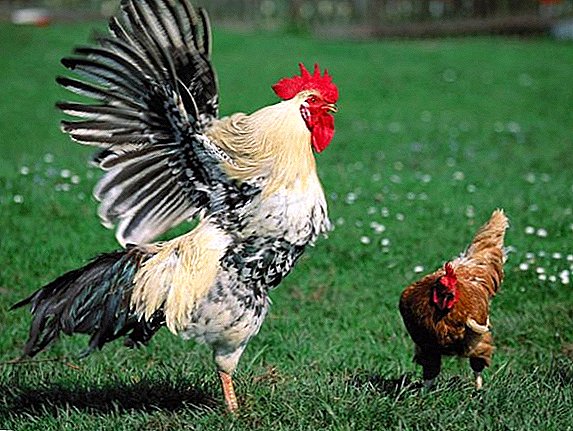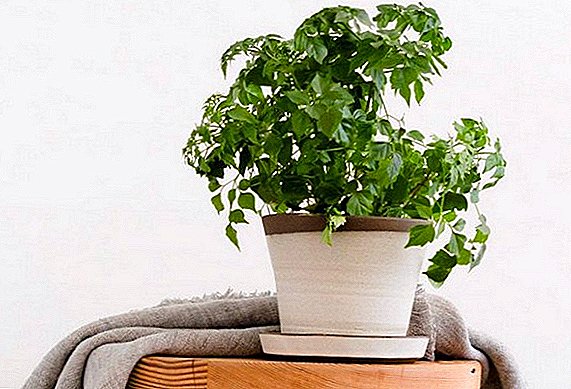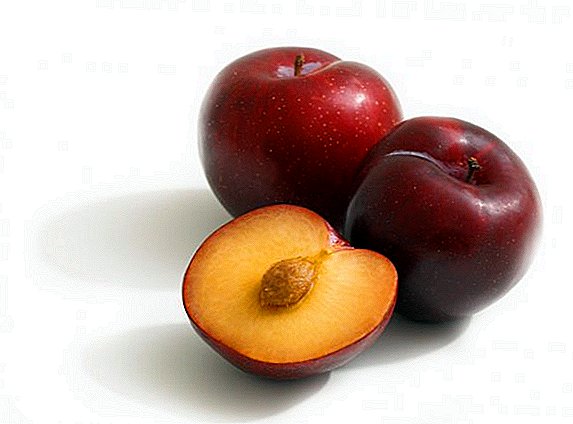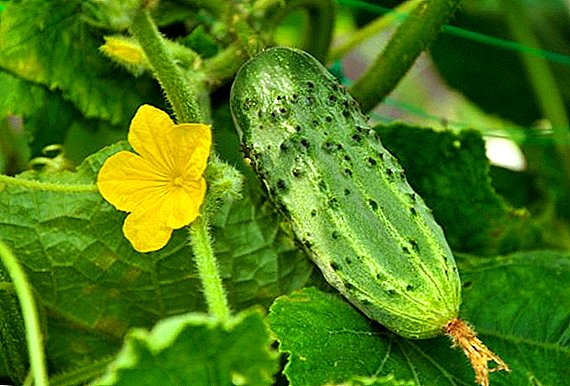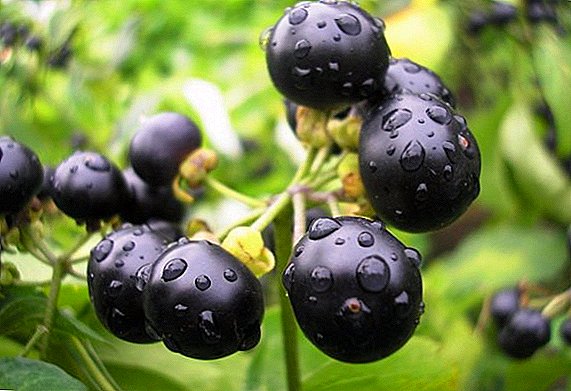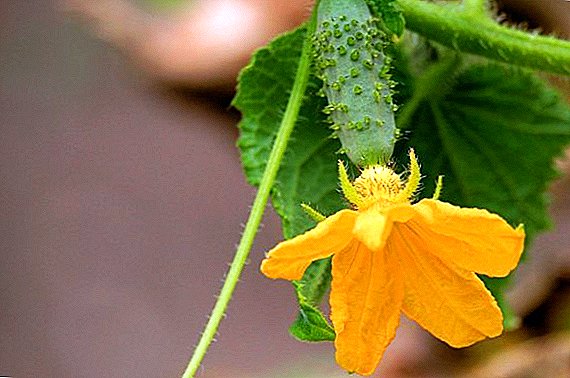
For those who want to get from the food not only good taste, but also a supply of nutrients for their body, the choice of a suitable potato variety can be quite a difficult task.
After all, not only that is important, but also unpretentiousness in cultivation, resistance to diseases and various weather conditions. However, you should not despair, because the Bluehead potato combines all these factors.
Read in our article a detailed description of the variety, get acquainted with its characteristics and characteristics of agricultural technology, find out what diseases it has a predisposition and whether it is prone to attack by pests.
Blue: variety description
| Grade name | Blue |
| general characteristics | Medium late Russian table variety suitable for making mashed potatoes, crisp potatoes and starch production |
| Gestation period | 100-115 days |
| Starch content | 17-19% |
| Mass of commercial tubers | 90-110 gr |
| The number of tubers in the bush | 9-11 |
| Yield | up to 500 kg / ha |
| Consumer quality | the flesh does not darken during cooking, crumbles during heat treatment, great taste |
| Recumbency | 90-95% |
| Skin color | yellow |
| Pulp color | white |
| Preferred growing regions | Central, Volgo-Vyatsky, North Caucasus, Central Black Earth, Middle Volga |
| Disease resistance | unstable to potato nematode, moderately resistant to late blight, relatively resistant to rhizoctoniosis and scab |
| Features of growing | can be cut seed tubers, requires a thick landing |
| Originator | VNIIKH them. A.G. Lorha (Russia) |
 So, potato variety Blue color characteristic and description of the variety:
So, potato variety Blue color characteristic and description of the variety:
This potato variety belongs to medium-late varieties, its growing season ends 80 to 100 days after the first shoots. It is the brainchild of Russian breeders, its originator - VNIIKH them. A.G. Lorch.
It was included in the State Register of the Russian Federation in 1993 for cultivation in the Middle Volga, North Caucasus, Volga-Vyatka, Central and Central Black Earth regions.
Potato variety Blue has many positive qualities, among which can be identified and yield. On average, 40 to 50 tons of potatoes are produced per hectare of crops. Marketability of fruits, too, did not let us down, it is kept at an impressive mark of 97%. It can safely be transported over long distances or stored in warehouses for a long time.
In the table below, you can compare the keeping quality of other varieties with potatoes Blue:
| Grade name | Recumbency |
| Blue | 90-95% |
| Arosa | 95% |
| Vineta | 87% |
| Zorachka | 96% |
| Kamensky | 97% (early germination at storage temperatures above + 3 ° C) |
| Lyubava | 98% (very good), the tubers do not germinate for a long time |
| Molly | 82% (normal) |
| Agatha | 93% |
| Burly | 97% |
| Uladar | 94% |
| Felox | 90% (early awakening of tubers at temperatures above + 2 ° C) |
 Read more about the storage of potatoes: the timing, location, temperature and the problems that arise.
Read more about the storage of potatoes: the timing, location, temperature and the problems that arise.And also about how to store in the winter, in the vegetable store, in the cellar, in the apartment, on the balcony and in the boxes, in the refrigerator and cleaned.
Tubers in this variety are rounded oblong, large and rather heavy. The average weight of a commercial tuber is 90 - 110 g, but often reaches 150 g. Usually one shrub forms 9-11 such fruits..
The peel is thin, light beige color with a slight reticulation along the top. The flesh has a soft white color and does not darken with cuts or any heat treatment. Blue starch content is quite high, reaching an average of 18-20%. Tuber eyes are small and appear in small quantities.
The starch content in other varieties of potatoes you can see in the table below:
| Grade name | Starch content |
| Blue | 17-19% |
| Ilinsky | 15-18% |
| knapweed | 12-16% |
| Laura | 15-17% |
| Irbit | 12-17% |
| Blue-eyed | 15% |
| Adretta | 13-18% |
| Alvar | 12-14% |
| Breeze | 11-15% |
| Kubanka | 10-14% |
| Crimean rose | 13-17% |
Shrubs grow to medium size and have not too spreading tops. The leaves are small, bright green. During the flowering period, the bushes are covered with flowers with characteristic light blue corolla, for which, in fact, the variety got its name.
Specifications
The main feature of the Blue variety is its excellent taste and good crispness. Therefore, it is possible to cook almost any dish from it, and mashed potatoes are especially good.
In addition, potatoes of this variety contain an increased amount of amino acids that are so beneficial for our body. In addition to the dining function, the Blue has another one - industrial. Due to its high starch content, it is actively used to process it..
 Read more about medicinal and not only the properties of potatoes.
Read more about medicinal and not only the properties of potatoes.For example, the danger of solanine, whether it is possible to eat juice and sprouts, what is the use and harm of raw potatoes.
Features of growing
Another plus blu is that she unpretentious to the soil and endures many vagaries of weather. She is not afraid of any cold snap or dry periods.
And even in the season of persistent heat, it will delight you with its harvest. This factor is explained by the fact that its potatoes have a very developed root system. Therefore, if he feels a lack of moisture, then his roots will dig deeper into the ground in search of water.
As for the characteristics of the landing, then there are several basic rules:
- The best period for planting this potato is the beginning of May. If the spring has good warm weather, then this can be done a few weeks earlier.
- If your planting material has a large size, it will be logical to cut it. It is necessary to divide it into approximately equal halves, and that there should be sprouts on each of them. Unlike some other varieties, blueness painlessly tolerates this procedure and cutting does not affect the quality of the crop.
- If you want to get a harvest from larger tubers, you should plant germinated tubers according to the scheme 70 x 30; The temperature of the soil into which your tubers are planted should not be below 6 - 7 ° C.
IMPORTANT! If you still can not decide on the landing dates (often changing weather conditions, etc.), then do it better earlier than later. Delay can affect the amount of minerals received, so important to the young plant.
In general, agrotechnical methods are standard - hilling, weeding, watering if necessary and desired.
Read more about whether hilling is necessary for potatoes, what it is best to do, how to produce it manually and using a tiller, whether it is possible to get a good harvest without weeding and hilling.
Most potato varieties respond well to fertilizer, especially if you know how to do it correctly.
Read about what it costs to feed potatoes, which fertilizers are the best and mineral minerals, and when and how to feed them and how to do it when planting.
A photo
See below: potato varieties photo





Diseases and pests
As if the advantages of the Blue and so lacked, she also has excellent immunity, which protects it from most of the diseases characteristic of potatoes. So, it is resistant to: Y virus, scab, potato carcinoma, phytophthora, Alternaria, Fusarium, Verticillia. Its only weak point is only the golden nematode. However, with due effort, and she will be nothing to you.
The nematode is a very small worm that parasitizes on the roots of potatoes. It spreads very quickly, so you need to react to its appearance in a timely manner or, even better, secure your plants in advance:
- Use competent crop rotation.
- Do not allow weeds to grow around your garden beds. This will help mulching.
- Liquid chicken manure, introduced immediately after planting, will destroy up to 90% of all nematode larvae.
- As a chemical remedy, Nematorin is an excellent choice, which should be applied to the soil in advance before planting.
On the issue of pests, information on the most common can be useful for you: the Colorado potato beetle and its larvae, a bear, wireworm, potato moth, butterfly scoop, aphid, cicada.
Blue is considered a versatile variety with many positive qualities. It does not need intensive care or protection, it is unpretentious to the soil and weather conditions, and besides all this, it is suitable not only for preparing culinary dishes, but also for use in the technical production of starch.
If you are going to grow potatoes for sale, then this variety should definitely be your favorite.
We want to offer you some more useful articles on how to grow potatoes. Read all about the Dutch technology, the cultivation of early varieties, which varieties are preferred in Russia and grown in other countries of the world. And also all about alternative methods: under straw, in bags, in barrels, in boxes.
And in the table below you will find links to other interesting varieties of potatoes that have a variety of ripening periods:
| Late-ripening | Medium early | Middle late |
| Picasso | Black Prince | Blue |
| Ivan da Marya | Nevsky | Lorch |
| Rocco | Darling | Ryabinushka |
| Slav | Lord of the expanses | Nevsky |
| Kiwi | Ramos | Courage |
| Cardinal | Taisiya | Beauty |
| Asterix | Lapot | Milady | Nikulinsky | Caprice | Vector | Dolphin | Svitanok Kiev | The hostess | Sifra | Jelly | Ramona |


